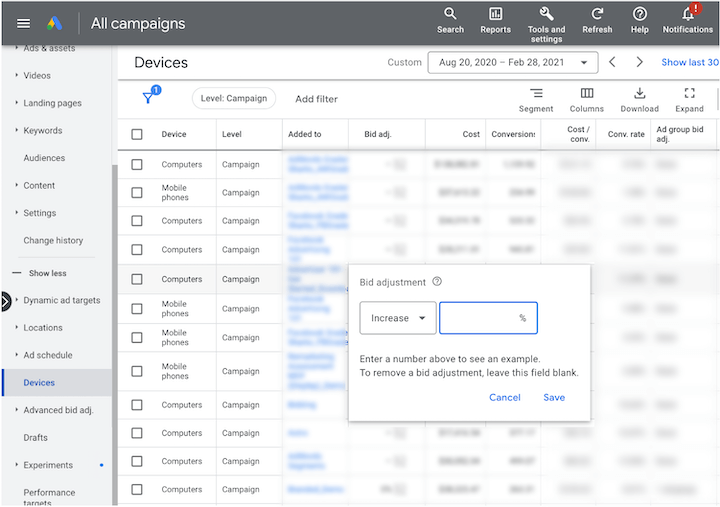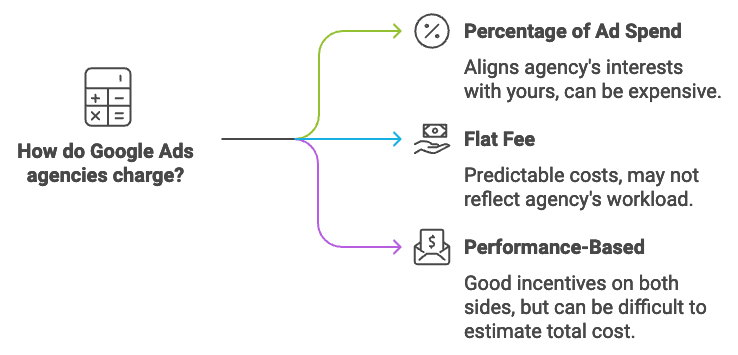How to charge clients for Google Ads

When businesses start running online advertising campaigns, one of the biggest questions is how to determine the right fees for clients. Especially with Google Ads – the most popular and effective advertising platform today – understanding how to calculate and set a fair price is the key to campaign success. That’s why many people are concerned about how to charge clients for Google Ads, because if the pricing is wrong, businesses may struggle to maintain profitability. Mastering how to charge clients for Google Ads not only helps optimize ad spending but also builds trust and transparency with clients.
How to charge clients for Google Ads

When talking about how to charge clients for Google Ads, the first thing to understand is that Google does not provide a fixed pricing table. All costs depend on the pricing model, keyword competition, industry type, and the client’s budget. Agencies or advertisers usually calculate service fees and profits based on these factors. Being transparent in the pricing process not only demonstrates professionalism but also shows clients the value they receive for every dollar spent.
General principles of charging
The core principle of charging for Google Ads is balancing between the actual ad budget paid to Google and the service fee added by the advertising agency. Google charges based on models such as CPC (cost per click), CPM (cost per thousand impressions), or CPA (cost per acquisition). Afterward, the managing agency adds a management fee, usually ranging from 10% to 30% of the ad budget, depending on the campaign’s scale and complexity.
Factors influencing the cost
Several factors directly affect how much to charge clients. First is the industry: competitive industries like real estate, finance, or insurance often have much higher CPC compared to others. Second is the location: ads in major cities cost more than in rural areas. Third is the keyword: short, broad keywords are more expensive than long-tail keywords. Additionally, ad quality, Quality Score, and account optimization level also determine costs.
Transparency in cost reporting
An important way to build trust with clients is through transparent cost reporting. This means clients should clearly see how much of their budget goes to Google and how much is charged as service fees. If agencies are vague in their explanations, clients may suspect hidden charges. Therefore, providing detailed, frequent reports strengthens long-term relationships between agencies and clients.
Popular pricing models for Google Ads services
After understanding the basic principles, the next step is choosing the right pricing model. There are several models commonly applied in practice, each with its advantages and drawbacks depending on client needs and agency strategies.
Percentage of ad spend
This is the most common model today. The agency charges a fixed percentage of the total ad spend. For example, if the client’s ad budget is $2,000, the management fee might be 15%, or $300. The advantage of this model is simplicity and clarity, but the downside is it may not reflect the actual workload involved.
Package-based pricing
Some agencies prefer package-based pricing, such as basic, advanced, or premium packages. Each package comes with different prices and benefits like ad optimization, detailed reporting, and technical support. This model allows clients to choose based on their needs and budget while giving flexibility to both sides.
Performance-based pricing
In some cases, agencies charge based on results achieved, such as leads, phone calls, or completed orders. This model has the advantage of ensuring direct benefits for clients, but the risk is that outcomes may be influenced by factors beyond the agency’s control, like the product, brand reputation, or after-sales service.
Hybrid pricing
To balance both sides, many agencies adopt a hybrid model that includes a percentage of ad spend plus performance-based bonuses. For example: 10% management fee + additional bonus if KPIs are achieved. This motivates agencies to optimize campaigns better while clients feel that costs match the results delivered.
Steps to build a transparent Google Ads pricing table
To present a convincing and reasonable pricing table, agencies must build a systematic, data-driven process.
Step 1: Analyze industry and competitors
Start by researching the client’s industry, keyword competitiveness, and average market costs. Reviewing competitors’ pricing helps agencies set fees that are competitive without being unrealistic.
Step 2: Choose a suitable pricing model
Based on the client’s budget and goals, agencies can choose percentage-based, package-based, or performance-based models. The key is transparency and ensuring the client understands clearly.
Step 3: Provide a detailed quotation
A clear quotation should separate the ad spend paid to Google from the service fee charged by the agency. This way, clients can visualize the cost structure and feel confident there are no hidden charges.
Step 4: Commit to transparent reporting
Agencies should commit to regular reporting that details costs and campaign results. The more transparent the reporting, the more confident clients feel about their investment.
Future trends in pricing Google Ads services
The Google Ads market continues to evolve, and so will service pricing trends.
More personalization
In the future, instead of applying one universal pricing table, agencies will likely personalize fees based on the client’s industry, scale, and business objectives.
Greater focus on performance
Clients are becoming more result-driven. As a result, performance-based pricing models, such as paying per lead or per sale, are expected to grow in popularity.
Leveraging AI to optimize costs
AI and machine learning will play a major role in cost optimization. As performance improves, management fees may decrease, and clients will expect service fees to reflect these improvements.
Contact Info
Information about “How to charge clients for Google Ads” hopes to provide you with additional necessary knowledge. At Rentads, there is a team of highly qualified and experienced staff and experts who will provide google account for rent as well as support when you run Facebook ads. Contact us via phone number.
Frequently Asked Questions
Fair pricing is not merely a number, but also a way for businesses to demonstrate transparency and respect for their clients. When clients see that the fees they pay are proportional to the value they receive – including both advertising effectiveness and the quality of management services – they will build trust and maintain long-term relationships. If the price is too high compared to the market average or too low but lacks transparency, this trust can easily be shaken.
Setting prices too low often makes clients question the quality of the service while placing heavy pressure on the business to maintain profitability. As a result, the advertising management team may lack the resources needed to optimize campaigns, leading to poor performance. In the long run, this undermines the company’s credibility and competitiveness in the market.